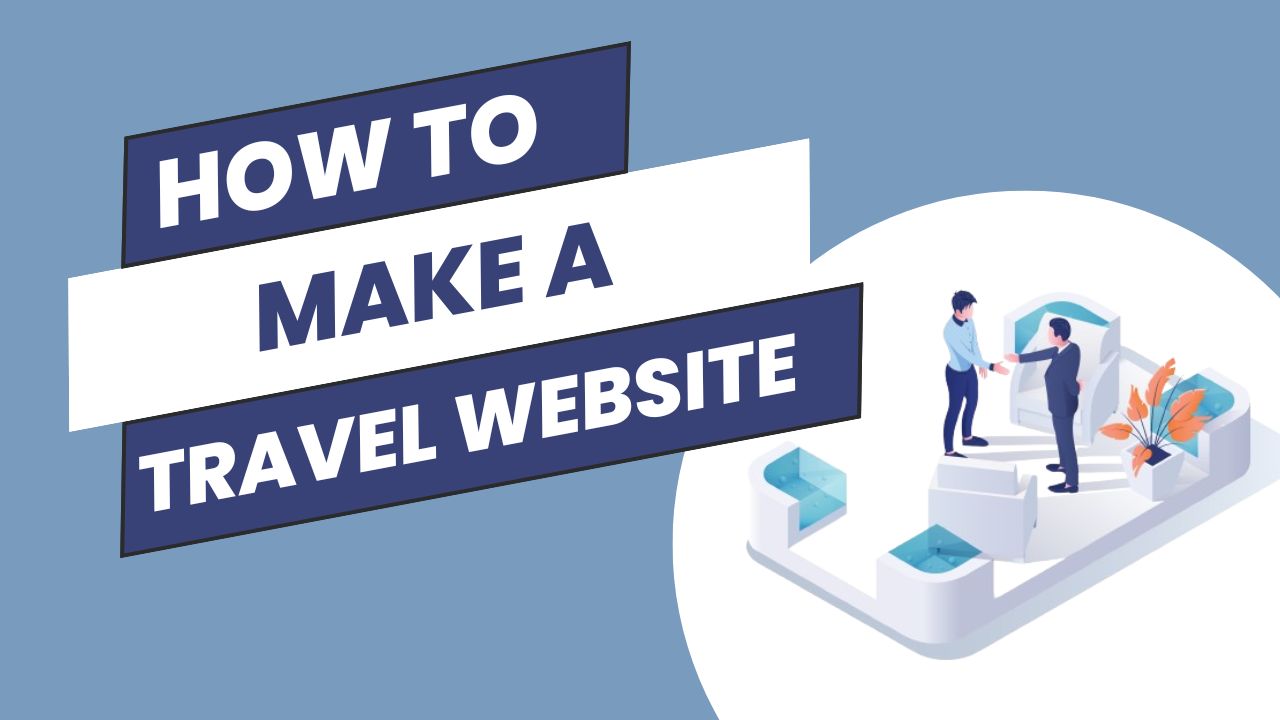
How to Make a Travel Website
Travel websites are the resource available to most travelers in need of the greatest offers and itineraries before they start business. A perfect travel website, whether an online booking platform, travel blog, or a travel agency is achieved by blending intuitive design, functionality, and content engagement.
And this book will lead you step by step in building an interesting, search-engine-friendly travel website that eventually converts visitors into customers.
Why You Need a Travel Website
Specify the Purpose of Your Travel Website Before beginning work on developing a travel website, define what it will be used for.
There are several types of travel websites:
-
Travel Agencies & Tour Operators: booking services, travel packages, and customized itineraries.
-
Online Travel Aggregators (OTAs): a way of comparing offers and making direct bookings for flights, hotels, and rentals like Expedia or Booking.com.
-
Travel Blogs: publishing personal experience and recommendations, tips, etc. Destination Guides: offering very detailed information on places, attractions, and activities.
-
Adventure or Niche Travel: Catering to specialist interest markets such as adventure travel, ecotourism.
All will have specific design and functional requirements so you need to be clear what type of website you are creating and who your audience is.
Selection of the Right Platform
This is the cornerstone of your travel website. Options available are:
-
WordPress: Suitable for a travel blog, small to medium-sized travel websites, or destination guides. With thousands of themes and plugins, it is flexible, customizable, and scalable. Powerful booking and itinerary features can be added with platforms like WP Travel Engine or Tour Master.
-
Custom Development: would be necessary for large travel companies, OTAs, and others with advanced features including custom booking engines or real time data integration, for which custom-made websites with the most-preferred frameworks available like Laravel or React would be the best.
-
E-commerce Platforms: If one is selling travel products or services, it is possible to create travel websites with ready-built booking systems and payment gateways using Shopify or WooCommerce.
-
Website Builders: Drag-and-drop builders like Wix and Squarespace help small businesses or personal blogs create a professional-looking travel website at minimal cost.
Travel Website Essentials
To achieve user requirements and expectations your travel website should have the following :
A. Intuitive User Experience
Navigation should be easy. Make sure that your website is navigation-friendly:
-
Menus should be non-cluttered. Have your major navigations at the top-most part of the page with obvious categories such as "Destinations," "Hotels," "Flights," "Packages," or "Blog."
-
Search Bar This is a robust search feature which empowers the easy search for either information or even bookings.
-
Breadcrumbs It would guide a user on how to trace their steps if they needed to backtrack and get back to pages that they were earlier visiting without confusion.
B. Mobile Optimization
Most users will access your website from mobile devices. Your website should be mobile-friendly:
-
Responsive Design: Your website should be adapted to vary with screen size.
-
Speed on mobile: Speed up on mobile devices through light design weight, compressed images, and other intermediate caching mechanisms.
-
Mobile-Specific Features: Add "click-to-call" functionality for booking support or mobile-friendly filters to search results.
C. Integrated Booking System
To a travel agency or OTA, the smoothest booking process is the highest priority:
-
Real-time Availability: Use travel provider APIs (flights, hotels, car rentals) to display availability and pricing in real-time.
-
Multi-step booking process: A seamless user experience including how to make a booking from clear step-by-step processes.
-
Secure Payment Gateway : This section can provide multiple payment mediums such as credit/debit cards, PayPal, or third-party providers, and seal information using SSL certificates.
D. Personalized to users
Travelers prefer sites that communicate experiential considerations
-
Customer Accounts: An account for a customer so that customers may create profiles, save preferences, or look at past bookings.
-
Dynamic Content: Customize content and its recommendation based on the behavior of a user, his search history, and his location.
-
Reviews and Recommendations: Use of reviews, ratings, or recommendations from users, for instance, previous bookings or user interest.
E. Interactive Maps
Interactive maps facilitate user experience through providing visual directions to a location:
-
Google Maps Integration: Use interactive maps with markers on the most sought after attractions, hotels, and restaurants.
-
Customized Maps: Use map plugins or APIs to create customized maps that can support the feel and view of your brand.
F. Social Media Integration
capitalize on social media to increase credibility and reach of your website:
-
Social Sharing: Insert social share buttons throughout the blog posts, itinerary pages and images.
-
Real-time feeds: Display your Instagram or Twitter feed to allow visitors to have real-time experiences.
-
User Generated Content: Encourage the experiences of travelers to share their photos or reviews via your social platforms.
User Experience and Design Requirements
An attractive user interface attracts visitors, but an attractive one keeps them longer on your site. Here are some things you should pay attention to:
-
Visual Attractiveness
A travel website should motivate as well as engage people with amazing visuals:
Good quality Images: Use large, professional images of places, hotels, and other tourist attractions to stimulate wanderlust.
Video Content: Incorporate both promotional as well as destination videos for an immersive user experience.
Virtual Tours: Offer virtual tours of the destination or the hotel so that people can see it with their naked eye.
-
Uniform Branding
Your brand identity needs to be maintained across all pages, indicating your travel business's vibe:
Color Scheme: Make sure to bring in a color palette that would resonate with the personality of your brand-what do you want your brand to say?-beach escapes call for cool blues or nature tours for adventurous greens or cultural escapades ask for vibrant oranges.
Typography: Use clear fonts; you may want to use headlines with playful, bold fonts to give character.
Logo position: have the logo placed at the top of every page of your website. This will help as a branding style that people can recognize easily.
-
Clear CTAs
Make it easy to navigate your site by using clear, actionable CTAs and help guide visitors.
Book Now buttons: The book now button needs to be easily seen at any given time
Lead Magnets: Give them a free guide, a downloadable itinerary, or an exclusive discount for their email address.
-
Accessibility
Your website needs to be accessible to search engines.
Images alternative text: All images should have alternative text for better accommodating screen readers.
Readability: Any text ought to be readable; that is, the text should be of sufficient size and also have sufficient contrasting color between the text and background.
Keyboard Accessibility: Any user should easily be able to navigate through your website using the keyboard alone.
Security and Trust Elements
Trust is most important when users are asked to put in their personal and payment information:
-
SSL Certificates: Secure a website using SSL encryption for the safety and trust of user data.
-
Payment Security: Always use a trusted payment gateway that follows PCI DSS standards.
-
Trust Badges: You can present trust badges, such as McAfee Secure or VeriSign, which will also help educate visitors about safety with their data.
-
Clear Privacy Policy: Develop your website with a privacy policy that is easily reachable, stating how the data of a user is handled.
Analytics and Continuous Improvement
This means once you have set up your travel website, the job doesn't just end there. For it to stay live, it requires constant monitoring in gaining improvements in the long run:
-
Google Analytics: track what your users do, the top pages visited, and what areas people are coming to and then leaving.
-
A/B Testing: Test the various layouts, CTA placements, and content to see what really resonates with your audience.
Ask some users to give some feedback in the form of provided feedback forms or surveys.
Conclusions:
Planning and attention to detail are crucial. Understanding the user experience and functionality will be helpful with every website built, but with a travel website, there are specific and more detailed requirements that need to be fulfilled. All the features regarding easy navigation, booking systems placed seamlessly so that they are fully integrated, and ensuring the website is optimized for mobile view are essentials. Every component counts in making sure the website is not merely attracting visitors but converting them into loyal customers.
SEO and content optimization will give your travel website visibility in the search engine result page(SERP) and organic traffic. With the addition of personal user experiences, high-quality visuals, and social media integration, that's what the visitors are going to be excited about when they find out about your offerings. Do not forget trust; secure your website by providing SSL certificates, showing trust badges, and ensuring safe payment processes, which will earn you credibility for your audience.
Also Read:- Optimize PPC Campaigns of Travel Agencies

 Start your Travel Business with Our 7 Day Free Trial Website!
Start your Travel Business with Our 7 Day Free Trial Website!





